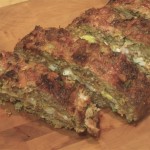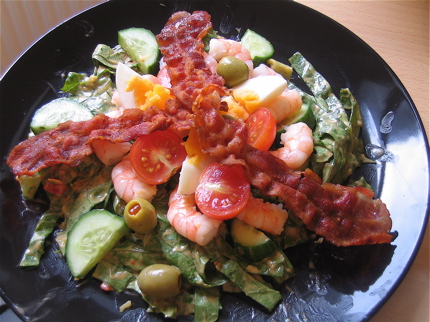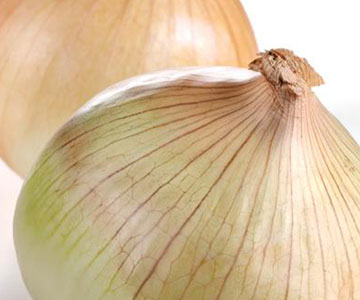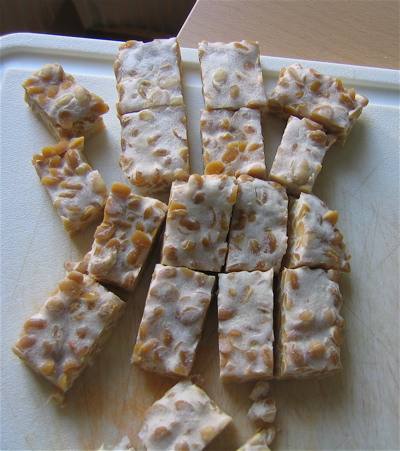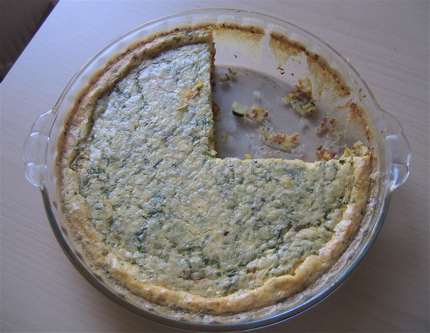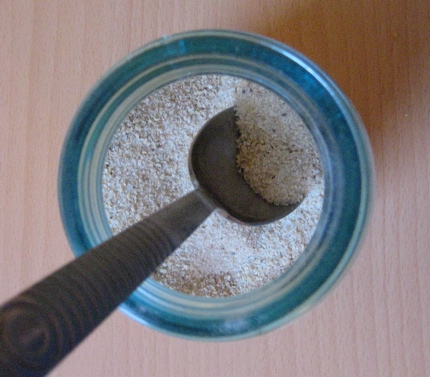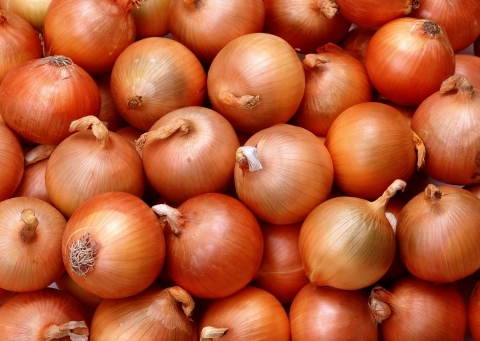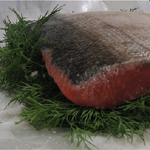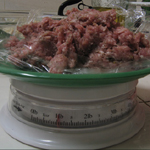Roasted Broccoli Romanesco
1 head Broccoli Romanesco, carefully broken into florets
1.5 T. olive oil
1/2 t. coarse sea salt
1/2 t. pepperPreheat oven to 375 degrees.
Toss florets with olive oil so everything is coated evenly. Spread florets on a baking sheet and sprinkle with salt and pepper.
Roast for approximately 45 – 50 minutes, stirring every 15 minutes, or until undersides of florets appear golden and caramelized.
* * * * * * * * * * * * * * * * * * * *
First things first. Even though it’s called Broccoli Romanesco, it’s actually a lot more like cauliflower in taste and texture than it is like broccoli. It is, in fact, a cross between the two developed in Italy a few years back, and as such, has characteristics of both (when I say developed, don’t think I mean genetically modified or anything– a simple, old-fashioned cross pollination is what I’m talking about here). In my opinion though, broccoli romanesco is like the fraternal twin of cauliflower, but just a regular ol’ sibling of broccoli
Probably the most remarkable thing about broccoli romanesco is its appearance. Like ferns, nautilus shells, the root system of some trees, and some cacti, broccoli romanesco grows in a fractal pattern, meaning that its shape can be divided into smaller sub-patterns, each of which is (roughly) a copy of the larger whole (here’s another cool example). As an engineer, I always find it to be really satisfying when I find an elegant mathematical abstraction manifest in nature — noticing the snowflake that just fell onto my glove is a perfect fractal, seeing the population of an ant colony following the formula of the genetic algorithm, observing that the center of a sunflower radiates in a fibonacci sequence, or in this case, finding a unique and unusual vegetable that grows according to the Mandelbrot mathematical formula. If you’re curious, the Mandelbrot formula is z -> z^2 + c, where c is any complex number, and -> means iterate (i.e. the result of calculating z becomes the base constant in the next iteration of the formula).
Anyhow, being a cross between broccoli and cauliflower, broccoli romanesco stands up well to treatment as either — steamed with a little butter and herbs, roasted, stir-fryed, made into soup with some cheese (though it seems a shame not to highlight its unique and magnificent appearance), or even cut into large ‘steaks’ a la Epicurious.com.
The recipe above is a twist on a suggestion from a cauliflower purveyor at the Menlo Park farmer’s market, and I must say is the essence of simplicity. When you have super fresh and flavorful vegetables, the best preparation is usually one that involves very few ingredients and simply lets the natural flavors of the vegetable shine through. It’s delicious too — the outside turns a deep golden brown, crisping just a little, while the inside is smooth, sweet, and creamy. It’s one of a very few cauliflower / cruciferious vegetable preparations that elicits a pavlovian-like mouth-watering response in me. Mmmmm… Don’t limit yourself to broccoli romanesco either — try it with regular cauliflower, pruple or orange cauliflower, or even perhaps halved brussels sprouts.
« Wilted Dandelion Greens with Garlic and Pecans | Home | Chard Stem Gratin »
